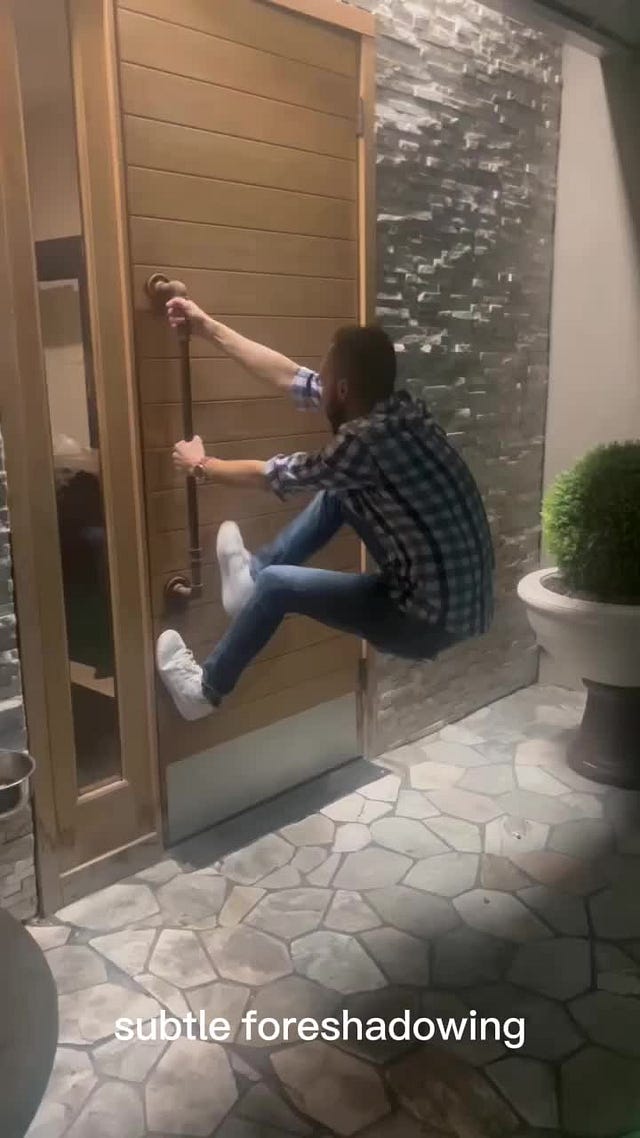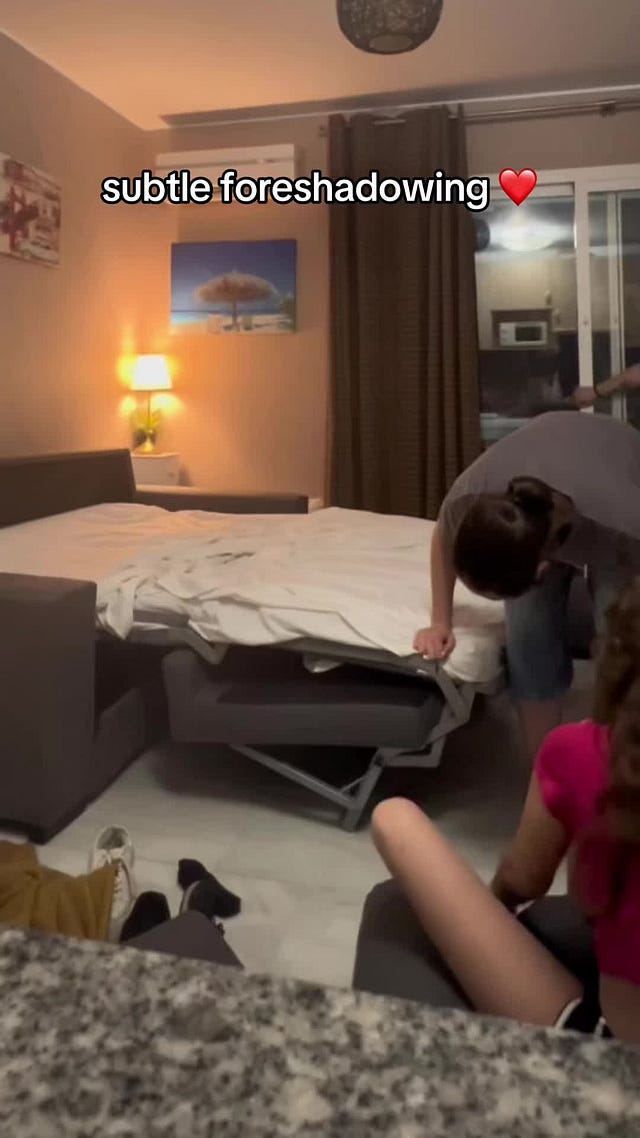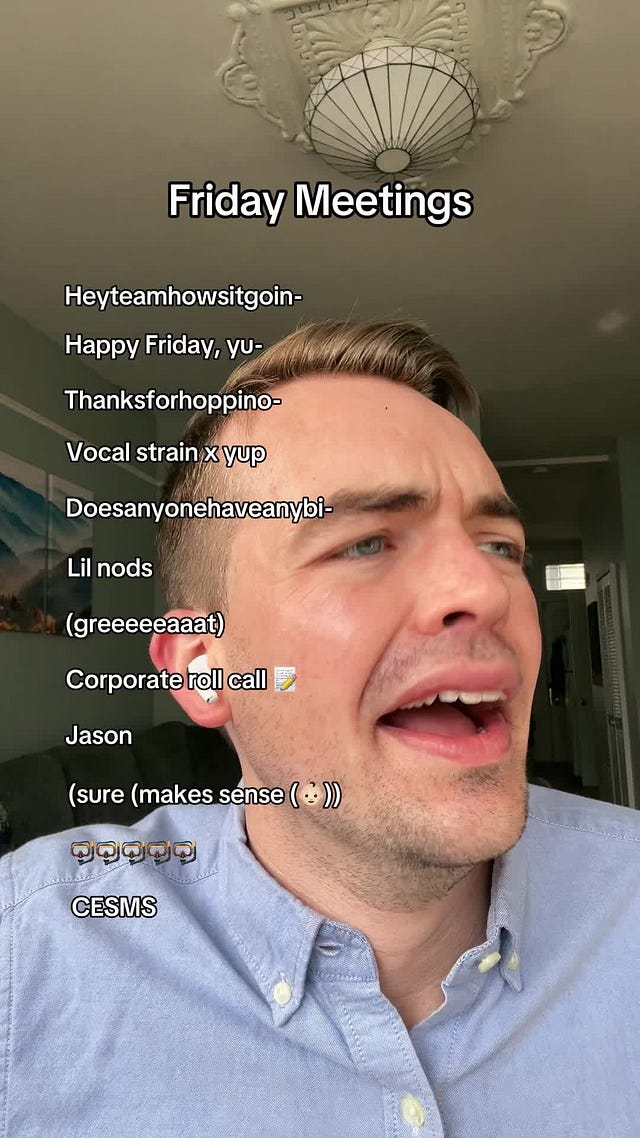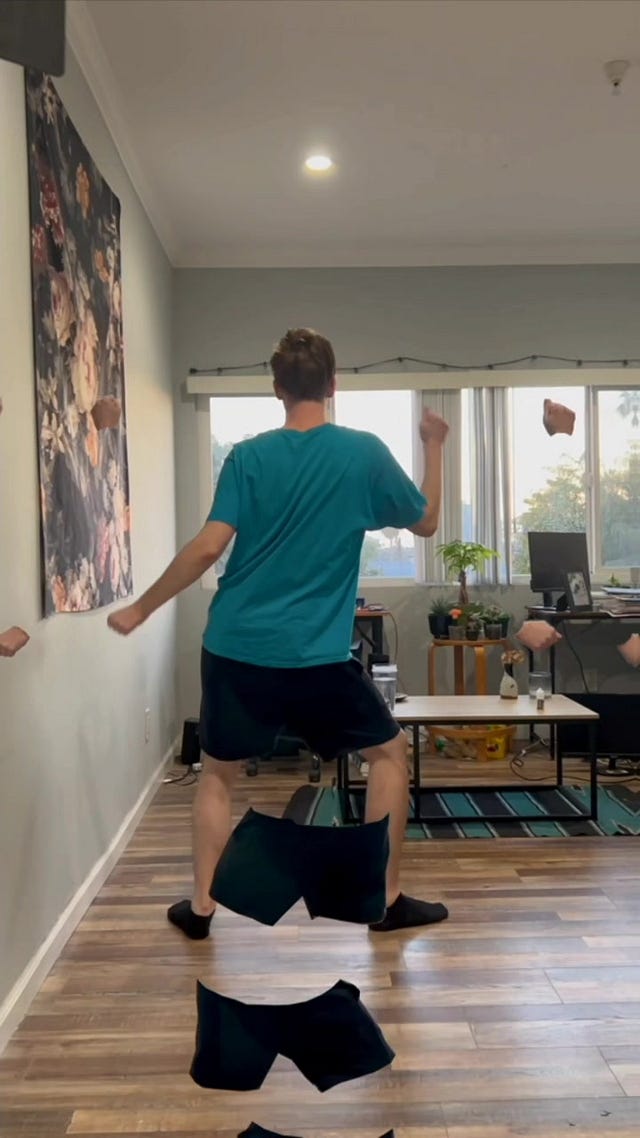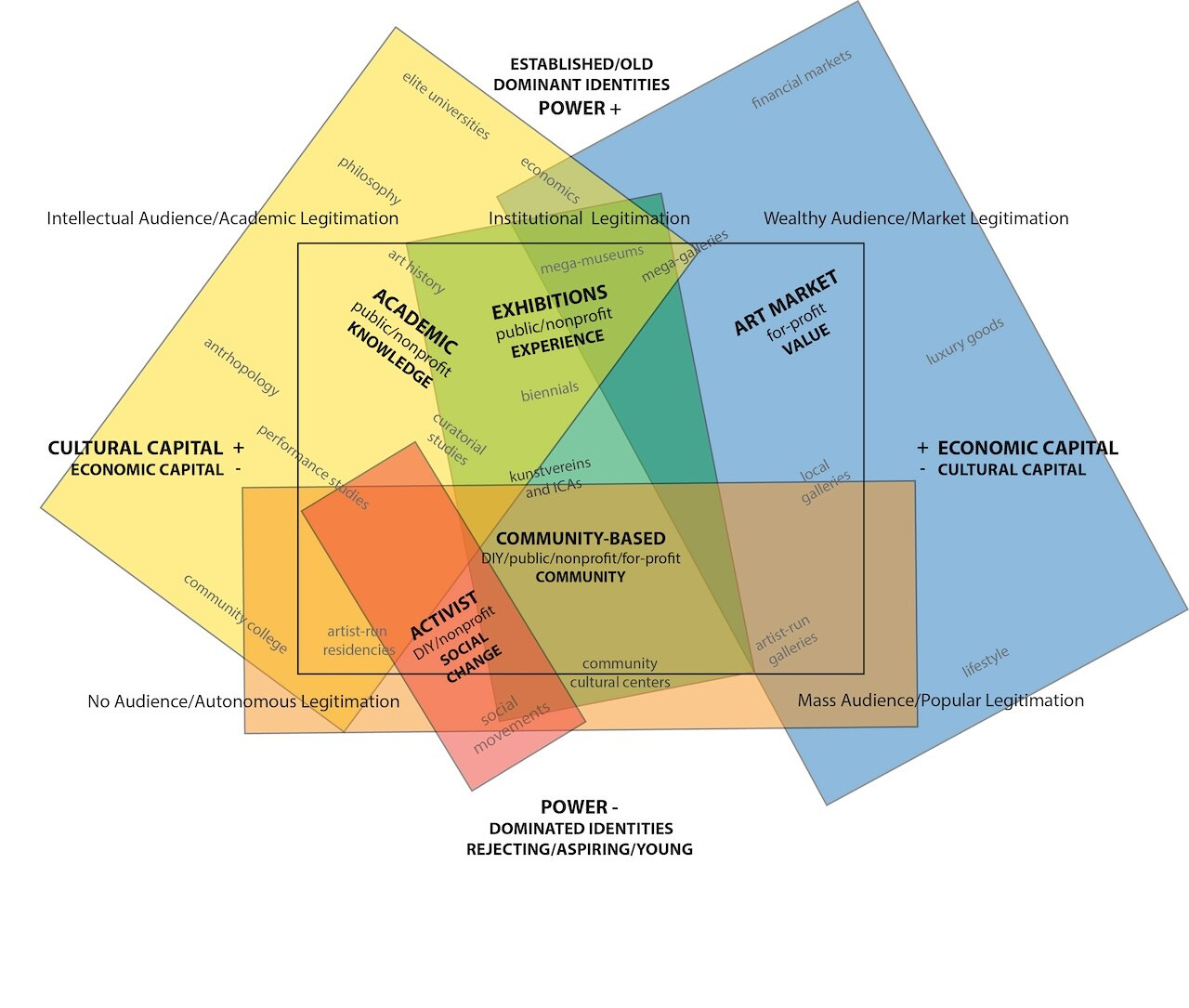The Recipe of Subtle Foreshadowing
Also: the Art World, Everything Sucks (or does it?), and a nice house in Japan
There’s a recent trend on TikTok that plays with the concept of foreshadowing, by well, not making it very subtle at all. It’s not truly foreshadowing, but more as a play on non-linear storytelling:
It’s great fun to watch. Here’s another one:
 Tiktok failed to load.
Tiktok failed to load.Enable 3rd party cookies or use another browser
It follows a trend of similar videos that explicitly play into the art of laying out the plot of the short video. In TikTok trends, you see the following:
The meeting agenda guy:
 Tiktok failed to load.
Tiktok failed to load.Enable 3rd party cookies or use another browser
Or the dance moves signaling (which smartly plays with the genre):
 Tiktok failed to load.
Tiktok failed to load.Enable 3rd party cookies or use another browser
It’s super simple, but it made me wonder how it works. Because in non-linear storytelling, the act of jumping forwards and backwards can be used for incredible effect if done well.
One notable TV series that did this recently is White Lotus. It starts a murder at the end of the narrative, and then sends the viewer back a week or so as guests arrive to a hotel. During the season, the tension ratchets up as relationships among the characters deteriorate in different ways around a theme. Just brilliant writing (s2 of White Lotus is a top 3 season of TV for me).
With all of this together, when does foreshadowing or explicit mapping of future events actually work?
Maps & Recipes
You can imagine two extremes, both of which would not be good:
The exposition of what’s going to happen is so detailed and explicit that it removes any sense of mystery or surprise. It’s almost a literal retelling before it’s told.
The exposition of what’s going to happen is so vague that’s not compelling.
Somewhere in the middle is where it becomes compelling as a narrative device.
I think maps and recipes are often good comparative structures.
A good map highlights where you’d want to go. You’ve seen the image of the peak of a trail and along the way it might highlight things worth seeing. Thus, it invites the hiker towards the destination. Simultaneously, it’s not as they say the “territory” itself. While some of us do enjoy just browsing Google Maps for fun, it’s not a replacement for the journey. Surprise is still necessary for a good and enjoyable hike.
A bad map doesn’t drag you in to explore it. It can also be too dense.
A great recipe shows you the food which is the end of your planned narrative. The ingredients are partly visible in it and the journey takes you through the process. A poor recipe is unable to foreshadow what you might eat and leaves out gaps in preparation such that the logic or plot of the preparation leaves you frustrated or lost (resulting in an undercooked mess).
Sometimes, a recipe might show you something that’s unattainable for an average cook, in the same way that a map might deceptively lure you into a direction with information and visuals that don’t match reality.
So, great (direct or indirect) foreshadowing and non-linear storytelling relies on:
Setting a novel, realistic, and clear future event
which from the setup of ingredients available at the start
leaves a viewer surprised in how the start gets to the unique end.
Which in some sense resembles the narrative structure of Kishotenketsu, which broken for English speakers consists of 4 parts:
Setup → Introduction of a scene A.
Development → Action of the scene A.
Turn → Unrelated juxtaposition in scene B.
Reconciliation → Merging scene A (Setup + Development) and scene B (The Turn).
The more unique and unlikely the future event, the more interesting it is, especially if the ingredients at the start don’t really point what could cause the developments to happen.
Interestingly, I’d add that genres are compressed foreshadowing in the same way that food cultures eventually develop expectations of common ingredients and preparation.
Stakes
What’s ultimately *easier* about this narrative structure is that by knowing how it ends, you’ve clearly established the stakes. In White Lotus, there’s no second guessing that if the characters do not resolve their tensions, someone will die. I love this narrative structure and it’s been interesting to see how different mediums have used it. I’m sure there’s plenty examples of it and if you have any to share, would love to know!
Bonus Content!
Missing my regular routine a bit. Since start of August been travelling and spending time with family. Only had 2 weeks in roughly 3 months of regular routine time. Unfortunately, it means I’m not writing as much as I want to. But, that’s the trade off. Looking forward to being more in writing mode again.
🕹️ Gaming - Legend of Zelda: Echoes of Wisdom
📚 Reading - Caroline Kepnes - You
When pitching a book, it’s recommended to add comps to it (“comparables”). Books like your book. There’s a few I managed to grab that seem tangentially related to my novel and so I’m going to spend the next 2-4 books reading some comps.
🏃♂️ Running - Elevation, lol
Been trying to get into my running routine, but again, with travel it’s just hard. Also, some cities just suck a lot for running. So, I’m just spending most of my time enjoying it as a hobby. Running a few kms here and there for health and exploring new places. After a tough run one morning, I felt a bit bummed that my fitness level had taken a hit, only to discover that I wasn’t aware just how high the elevation of the city was. Glad I haven’t lost all my fitness. 😅
🖼️ Art - See You There. Sold!
Happy to report that “See You There” sold for $1,200 for the Lumen Prize Benefit Auction with Sotheby’s.
Thanks to Lumen, Sotheby's, and Spencer Graham for coordinating on this!
If you’re the new owner, say hi! :)
💾 Links
The Power & Capital of the Art World
Today, the consolidation of art’s subfields has produced distinct arenas of discourse and practice and has defined distinct stakes within their specific material and symbolic economies. Competition over the distribution of these stakes seems to have overtaken any significant contestation of their definition. What once might have been relations of struggle between these subfields, or over the values that define them, now appear to be relations of mutual dependency, if not parasitism. It is the mutual dependency of art’s subfields, above all, that holds the field of contemporary art together and each of its subfields within it.
What's always been interesting to me about the art world is that because of its subject, meta discourse is readily accepted and encouraged. It's this persistent awareness of the expansion of context. Can be exhausting and naval gazing at times, but it never feels like one can fully wrap one's head around the entirety of it.
Everything Sucks?
It's easy to fall into the trap of everything produced, sucks. The reality is, there's always people that don't like the new thing and they'll always be there. It's not to say there isn't legitimate critique and discourse, but it does feel very apparent sometimes that new things are sometimes just challenging for people who have become used to their way. These are from forums when Peter Jackson’s LOTR were released.
More Japanese Urbanism
Another example of why I adore Japanese Urbanism. It's easier to be creative because some of the local planning commissions can only truly deny development if it doesn’t comply to basic safety and neighborly restrictions (like sufficient setbacks for light, floor-to-area ratios, etc). Aesthetic freedom is quite high in many neighborhoods.
🎶 Music
Niko B - trespass coat
Such a good groove and the rapping is immaculate. I like dry Britishness of it too. Enjoy!
That's it for this week folks. Back to a regular routine next week. Looking forward to it. Hope you get to see a lovely sunset.
Simon


